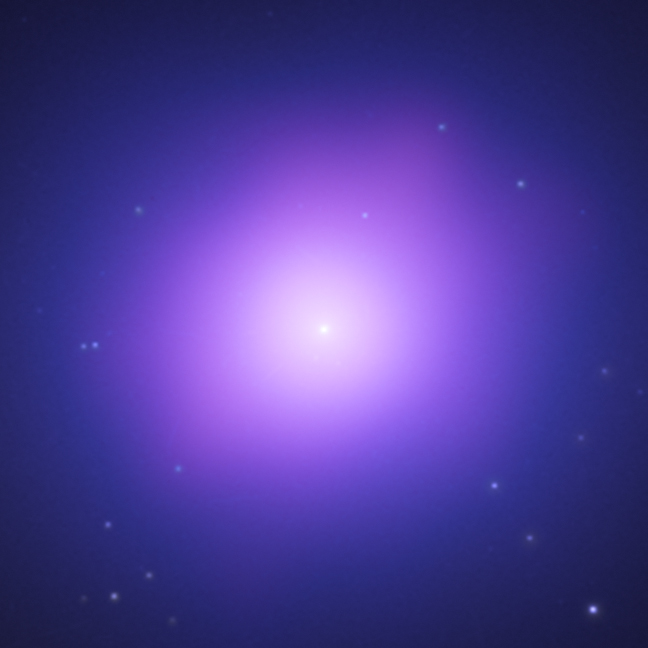
 Credit: X-ray (NASA/CXC/Univ. of California Irvine/P.Humphrey et al.); Optical (NASA/STScI)
Credit: X-ray (NASA/CXC/Univ. of California Irvine/P.Humphrey et al.); Optical (NASA/STScI)
Ate its Full
One of the largest known black holes in the local Universe resides at the heart of a rather non-descript elliptical galaxy called NGC 4649. Unlike many black holes, which reveal their presence by extreme activity (emission of jets of high energy particles, extreme luminosities, et cetera) powered by the accretion of matter from their host galaxies, the extremely massive black hole in NGC 4649 is rather lethargic. Evidently it's eaten all it can, swelled up to enormous size, and has decided to take a nap. The black hole has only revealed its presence through painstaking optical analysis of the effect of its gravity on nearby stars and gas using ground based telescopes and the Hubble Space Telescope. The image above shows a composite of a Hubble image of NGC 4649 (in blue) and an X-ray image from the Chandra X-ray Observatory (in purple). Astronomers have realized that, even though there's no bright X-ray source near the location of the black hole, the change in temperature of the X-ray emission near the black hole can be used to measure the black hole's mass. It checks out as a whopping two billion times the mass of the sun, in good agreement with the mass determined from optical studies.
Published: July 28, 2008
<
HEA Dictionary ● Archive
● Search HEAPOW
● Other Languages
● HEAPOW on Facebook
● Download all Images
● Education ● HEAD
>
Each week the HEASARC
brings you new, exciting and beautiful images from X-ray and Gamma ray
astronomy. Check back each week and be sure to check out the HEAPOW archive!
Page Author: Dr. Michael F. Corcoran
Last modified Tuesday, 27-Feb-2024 10:06:50 EST


